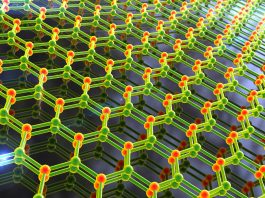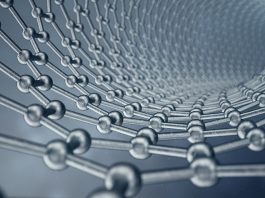The Graphene Flagship – one of Europe’s biggest-ever research projects – explores the nature of innovation and the value and challenges of long-term research projects.
Do long-term research projects drive innovation – and if so, how? What are the benefits and challenges of research projects that exist over an extended timeframe?
Members of the Graphene Flagship are well-placed to discuss these questions. The Graphene Flagship is a €1bn, ten-year research project dedicated to researching graphene and bringing graphene innovation out of the lab and into commercial applications. With its network of nearly 170 academic and industrial partners in 22 countries, the Graphene Flagship is one of Europe’s biggest-ever research projects, bringing together academic and commercial organisations from across Europe to work side-by-side towards common goals.
As the Graphene Flagship approaches its ten-year anniversary in September 2023, members of the project and the global research community more broadly have been reflecting on the Graphene Flagship’s decade of research and innovation, and on what funders and researchers can learn from the project – and, in particular, from its long-term nature. What worked, what didn’t, and what do these outcomes tell us?
Having more time can enable more innovative, expansive research
Almost everyone has wished at one point or another to have more time. This can be especially the case for researchers, who may feel that the time or funding window they have to complete a research project does not always allow them to explore their research topic as fully and as effectively as they might like.
Designing and funding research projects over longer timeframes can help researchers in designing and implementing effective, impactful projects. It takes time to get a team working together; it takes time to build trust and processes; and most projects that are worth doing are hard enough that they take more than three years to accomplish, in particular if one starts with a new discovery and aims at bringing it to real applications. Longer timeframes can help build in room for added exploration, experimentation, setbacks, and for finding ways of overcoming these.
Within the context of the Graphene Flagship, for example, having the overarching project exist over a ten-year timeframe meant that the various research initiatives happening within the Graphene Flagship had the opportunity to reassess their scope and focus and, where appropriate, to alter their direction. Researchers had the opportunity to learn from setbacks and apply these learnings directly within the same project framework. This continuity in terms of time and funding enabled researchers to spend more time exploring as well as more time refining the scope of their research, without the immediate pressure of finishing a project by a rapidly approaching deadline, or of applying for the next grant.
More concretely, this lengthy timeframe has allowed researchers in the area of electronics, for example, to progress their research to the point at which the European Commission decided to make an additional €20m investment to fund the creation of an experimental pilot line for graphene-based electronics, optoelectronics, and sensors. The Graphene Flagship’s ten-year timeframe has also allowed it the time to engage over an extended period with industry, thereby gaining from both being informed by commercial needs and being able to inform commercial needs using project research.
Long timeframes can enable better collaboration
Collaboration can be deepened further over longer time periods. For this reason, longer-term research projects have plenty to offer.
When asked about the value of research projects with long timeframes, Graphene Flagship Director Professor Jari Kinaret was quick to emphasise this collective, human element.
“Projects that run over long periods of time have the potential to establish entire communities of learning, research, and collaboration,” said Professor Kinaret.
“In the context of the Graphene Flagship, a key takeaway is that its long, ten-year timeframe is a significant part of what has contributed to its success as a project. This fact has been recognised both by those of us working internally within the project, as well as by external evaluators such as the European Commission.
“The long timeframe allows partners to develop the trust necessary to ensure productive working relationships across academia and industry, and makes it possible to take an idea through the basic research phase to applied research and commercialisation. In this sense, the longevity of the project is even more important than its large budget. Indeed, the Flagship has demonstrated that long-term research projects have the potential for much greater progress and impact.”
Having more time impacts continuity
Long-term research projects have the potential to engender greater levels of collaboration – as mentioned previously – however, maintaining connections and continuity throughout a lengthy project can sometimes be a challenge.
For example, long-term projects might suffer from researchers and administrators leaving a project before it has ended or joining it halfway through. Having a turnover of people involved in a project can be constructive to an extent: new people means fresh ideas and perspectives. Nevertheless, frequent turnover can become a problem if there is too much change within a project in terms of who is doing what – and if skills and knowledge are lost as people leave – and the project’s direction and continuity suffer as a result.

The good news is that these challenges are not inherent to long-term research projects, although long timeframes can mean that it is likelier the people involved in a project will change. Long-term research projects also have the potential to foster greater continuity, as researchers involved are enabled to work on one project for an extended period of time.
Moreover, there are ways of mitigating the challenges of maintaining continuity throughout long-term research projects. Key among these strategies are ensuring proper handovers when people leave; hiring researchers who embody a diversity of skills and knowledge; and maintaining positive connections with researchers previously involved in the project, in case one needs to reach out to them. Having clear and well-communicated goals for the project and a strategy for how to achieve these – and for how to measure success – also help ensure that projects stay on track, regardless of changes among researchers and staff.
Long-term projects need good administrators
Administration is an important aspect of long-term research projects that may not always be front of mind for researchers – however, the value of good administration should not be overlooked. Long-term research projects, and in particular ones with large budgets, need good administrators and well-defined procedural frameworks to ensure deadlines are met, details surrounding expenditure and finances are recorded, and reporting is done punctually and to a high standard.
The structure of the Graphene Flagship, for instance, necessarily incorporates a range of administrative functions to ensure that the project is meeting its key deliverables. A centralised team works to help co-ordinate Graphene Flagship finances, administration, communications, and media outreach. For a project of this size, with nearly 170 partners, having a centralised administrative team is essential in order to co-ordinate projects, run events, and manage high-level outreach campaigns. Smaller, shorter-term projects may not incorporate tasks such as running conferences. For big-budget, long-term projects, however, such tasks are more common and typically require the project to have its own administrative infrastructure.
What does the Graphene Flagship specifically tell us about innovation?
With 2023 marking the ten-year anniversary of the Graphene Flagship, various stakeholders are curious about the extent to which the project has succeeded – and, indeed, are curious about how this success ought even to be measured.
Measuring the success of research projects can be a challenge because impact and innovation are not always immediate or apparent. In the field of graphene research, for example, due to the field still being in early stages of development, the full impact of research being undertaken today through initiatives like the Graphene Flagship may only become fully apparent decades from now. This is especially the case given the Graphene Flagship’s diverse impacts range from novel batteries to composite materials for the automotive and aviation industries, to healthcare applications, to wearable electronics and sensors, to pollution-reducing sustainability initiatives and water filtration technologies.
Regarding the Graphene Flagship specifically, this long-term project has ultimately – happily – proven to be a success story. As Professor Kinaret explains, the Graphene Flagship has exceeded its targets exponentially.
“The Graphene Flagship’s research into graphene has resulted in over 300 patent applications; over 15 successful spin-off companies; and almost 5,000 publications cited approximately 200,000 times,” said Professor Kinaret.
“Yet, even with these achievements, the Graphene Flagship’s results still only scratch the surface of the impact graphene can, and likely will, have. With this in mind, the Graphene Flagship’s impact rests not only on what it has achieved to date, but also on the foundations it has established for future graphene research and innovation in Europe. In no small part thanks to the foundations set by the Graphene Flagship, Europe is likely to become a graphene powerhouse in the years and decades to come.
“This achievement is a strong testament to the value of graphene research and of long-term research projects more broadly.”
It is exciting to think that the research done today may well inspire the innovations of tomorrow, even if we do not always understand exactly how this process will come to be. Perhaps this process indicates, in the end, a core truth regarding innovation: that much can be achieved, but in order to do so, one must invest in people, and provide them with time and support to undertake research. Only then can they deliver the findings that have the potential to gather in momentum and impact over the many years to come.
Rosalind Moran
Press and Communications Co-Ordinator
Graphene Flagship
https://graphene-flagship.eu/
rosalind.moran@graphene-flagship.eu
https://www.linkedin.com/company/grapheneeu/
https://www.facebook.com/GrapheneEU
https://twitter.com/GrapheneEU
https://www.instagram.com/grapheneeu/?hl=en
Please note, this article will also appear in the thirteenth edition of our quarterly publication.





